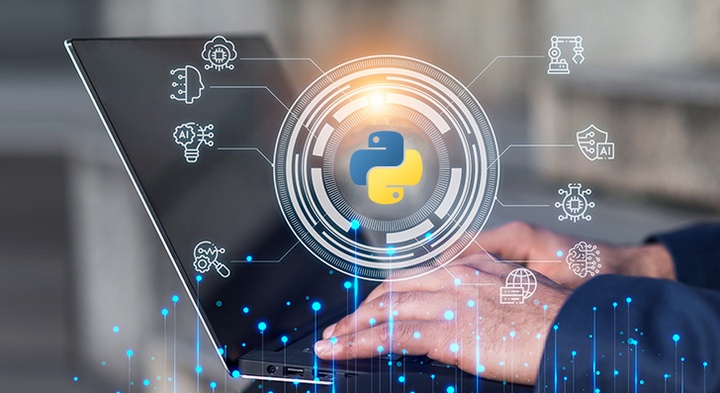Python sits at the heart of AI, machine learning, data science, and automation. In 2025, that centrality hasn’t faded, it’s widened. Tech teams are juggling LLM features, data products, and orchestration at scale, all while hiring markets remain tight. The result? Leaders need smarter Python development staffing strategies, not just more requisitions. This article breaks down why Python still wins, how companies are tackling the talent crunch, and which flexible staffing models unlock momentum. For teams considering a specialized partner, it also outlines where a Python Development Staffing Agency adds measurable value. Looking to Learn more and refine your approach? Read on.
Why Python remains vital in AI and machine learning
Python’s dominance in AI and machine learning comes down to three things: ecosystem depth, developer productivity, and operational maturity.
- Ecosystem depth: Core frameworks, PyTorch, TensorFlow, JAX, scikit-learn, keep evolving, while LLM tooling (Transformers, LangChain, Ray, vLLM) shortens the path from prototype to production. Libraries for serving (FastAPI, BentoML) and observability (OpenTelemetry integrations) close the loop.
- Developer productivity: Python’s readability and rich typing support (Pydantic v2, type checkers like mypy, Ruff/Black for consistency) let teams ship quickly without sacrificing quality. Recent CPython releases have delivered noticeable performance gains, which helps counter the “Python is slow” narrative in many real-world workloads.
- Operational maturity: MLOps stacks, MLflow, Kubeflow, Airflow, and feature stores, are battle-tested. Teams can track experiments, package models, and push to scalable endpoints with repeatability.
In 2025, enterprises aren’t just building classifiers: they’re shipping multimodal applications, retrieval-augmented generation, and privacy-aware inference. Python remains the connective tissue across data ingestion, model training, evaluation, and serving. That’s why staffing strategies prioritize developers fluent in both the language and the surrounding platform: GPU tooling, vector databases, and deployment patterns. A Python Development Staffing Agency will often pre-vet talent against these end-to-end competencies, not just framework familiarity.
The role of Python in data science and automation projects
Python is the default glue for data and automation work.
Data science and analytics
- Dataframes and compute: Pandas still rules the basics, while Polars and DuckDB have surged for performance and on-disk analytics. Engineers who can choose the right tool, and explain why, save months of rework.
- Orchestration and quality: Airflow, Dagster, and Prefect schedule pipelines that feed BI and ML. Great Expectations and pydantic-based validation prevent silent data drift.
- Analytics engineering: dbt, SQLMesh, and Python-backed tests help teams bridge warehouse transformations with Python-based feature logic.
Automation and platform engineering
- Infrastructure and ops: Ansible and Pulumi (with Python) make environments reproducible. Python scripts handle release tasks, log processing, and governance workflows.
- QA and test automation: pytest, Playwright, and Robot Framework accelerate reliable CI/CD.
- RPA and internal tools: Lightweight bots and FastAPI microservices automate repetitive back-office steps.
For all of these, Python’s batteries-included standard library, rich package ecosystem, and strong community support reduce time-to-value. When scoping roles, leaders increasingly seek hybrid skill sets: data engineers who automate reliably, and ML engineers who understand orchestration and cost. That hybridization informs today’s staffing plans and the profiles curated by any capable Python Development Staffing Agency.
Addressing talent shortages in Python development
The shortage isn’t only about headcount: it’s about the right mix of Python, cloud, and domain expertise. Teams that are winning in 2025 do a few things differently:
- Broaden the aperture: Hire for fundamentals (algorithms, data modeling, testing discipline) and ramp framework knowledge via focused onboarding. Candidates with strong software engineering plus 3–6 months of guided ML or data training can outperform “framework-only” résumés.
- Embrace global, time-zone-aligned talent: Nearshore and distributed teams provide coverage without breaking collaboration. Clear documentation and async rituals make this sustainable.
- Streamline the funnel: Skills-based screens, short practical exercises, and structured interviews cut time-to-offer. Many organizations now use AI-assisted screening to surface signal while keeping human judgment at the center.
- Compensate for impact: Competitive pay, learning budgets, and clear promotion ladders reduce churn. Retention matters as much as sourcing.
- Reduce ramp risk: Start with project-based trials or contract-to-hire to validate fit and velocity before expanding scope.
Where internal recruiting hits bandwidth limits, a Python Development Staffing Agency can pre-qualify candidates on the exact stack (FastAPI, PyTorch 2.x, Polars, Ray), verify code quality with work samples, and handle reference checks fast. Leaders can then reserve interview time for high-signal finalists. Want to learn more about building a balanced pipeline? Consider piloting a dual-track model: internal sourcing plus a specialized partner for spike demand.
Flexible staffing models supporting tech innovation
Innovation rarely follows headcount plans. Flexible models let teams surge when prototypes turn into roadmaps.
- Staff augmentation: Add vetted Python engineers to an existing squad for sprints or a quarter. Best when architecture is set and the need is execution speed.
- Project-based or outcome-based teams: A managed pod (tech lead, developers, QA, data) delivers a defined scope, ideal for greenfield services, MLOps setup, or a migration to FastAPI.
- Fractional experts: Bring in a staff engineer, data platform architect, or MLOps lead a few days per week. They unblock decisions, mentor the team, and prevent expensive detours.
- Contract-to-hire: Prove fit before committing. This is effective in markets where senior Python talent is scarce and costly to replace.
The right choice depends on IP sensitivity, speed, and internal capacity. A specialized Python Development Staffing Agency should offer more than resumes: discovery workshops, role calibration, SLAs, and a playbook for knowledge transfer. The goal is momentum, without adding managerial overhead or creating vendor lock-in.
Training and upskilling strategies for Python teams
Great teams outlearn the market. In 2025, upskilling isn’t a perk: it’s a risk control.
- Targeted curricula: Map skills to your stack, FastAPI + Pydantic v2, data validation with Great Expectations, vector DB integrations, Ray for distributed workloads. Keep it practical.
- Learning ladders: Define progression from “Pythonic fundamentals” to “production ML engineer” with example projects, code review checklists, and quality gates.
- Pairing and guilds: Regular pair programming, architecture reviews, and internal talks spread context faster than slide decks.
- Real projects as training: Rotate engineers through an MLOps initiative or analytics refactor with a safety net of mentors.
- AI-assisted development: Treat copilots and code search as training wheels, with guardrails, tests, static analysis, and security scanning.
Upskilling complements hiring. Even when partnering with a Python Development Staffing Agency, organizations that invest in internal learning see faster onboarding, lower defect rates, and higher retention.
How businesses balance in-house and outsourced talent
The durable pattern is simple: keep core IP and architecture ownership in-house, use external capacity for acceleration.
A practical split
- In-house: Product strategy, domain logic, model IP, data governance, and principal engineering roles that set standards.
- External: Feature delivery, integrations, infrastructure-as-code, test automation, pipeline hardening, and architecture spikes.
Make it work
- Clear ownership: RACI at the epic level: a single in-house owner for every service or model.
- Knowledge transfer: Periodic walkthroughs, ADRs, and well-tended READMEs. Time-box a transition phase, not just a handoff meeting.
- Security and compliance: Background checks, least-privilege access, data minimization, and reproducible environments.
- Outcome alignment: Tie SOWs to measurable milestones (throughput, latency, test coverage) rather than hours alone.
When teams want to learn more about de-risking this mix, they often start with a pilot: one product area, one partner, clear metrics. A capable Python Development Staffing Agency will lean into transparency, dashboards, demo cadence, and joint retros, to keep incentives aligned.











